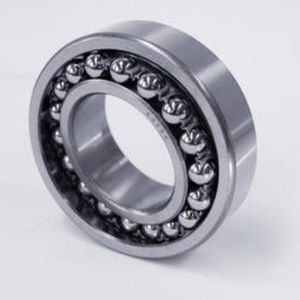
- Power Transmission - Mechanical components
- Bearing and Linear Guide
- Ball bearing bearing
- Findling Wälzlager GmbH
Ball bearing bearing 718 radialaxialangular-contact



Add to favorites
Compare this product
Characteristics
- Rolling element
- ball bearing
- Configuration
- radial, axial, angular-contact, single-row
- Material
- steel
- Other characteristics
- combined, with lubricant, miniature
Description
Angular contact ball bearings have raceways in their inner and outer rings that are arranged offset with respect to each other in the direction of the bearing axis. They are designed for bearing configurations that have to handle combined loads such as radial and axial loads acting at the same time. The axial load carrying capacity of the angular contact ball bearings increases with the size of the contact angle.
In the case of single-row angular contact ball bearings, the typical contact angle is 40° (design -B). Unlike with spindle bearings with significantly smaller contact angles, this allows very high axial loads to be transferred at simultaneously high radial loads.
Universal designs
Single-row angular contact ball bearings in a universal design are provided for paired installation in an X, O or tandem arrangement. Universal design means that the raceways and lateral surfaces of the rings are smoothed in such a way that any bearings having the same size and design can be directly built into the desired assemblies. A distinction can be made between the following universal designs depending on the desired axial play:
UA with axial play
BG without play (no pre-tensioning), 40° contact angle (typical Japanese design)
UO without play (without pre-tensioning)
UL slight pre-tensioning
UM medium pre-tensioning
US strong pre-tensioning
Inadequate sealing can allow external environmental conditions to negatively impact running characteristics and thus a bearing’s service life. For this reasons, bearings must be protected by seals.
Bearings with seals on both sides are generally lubricated for life
At the same time, seals also prevent lubricants from leaking
Catalogs
Related Searches
- Rolling bearing
- Steel bearing
- Ball bearing bearing
- Roller bearing
- Radial rolling bearing
- Plain bearing
- Axial rolling bearing
- Single-row bearing
- Track bearing
- Metal plain bearing
- Deep groove ball bearing
- Double-row bearing
- Precision bearing
- Rod end
- Cylindrical roller rolling bearing
- Steel wheel type roller
- Cage assembly bearing
- Tapered roller bearing
- Angular-contact bearing
- Self-lubricating plain bearing
*Prices are pre-tax. They exclude delivery charges and customs duties and do not include additional charges for installation or activation options. Prices are indicative only and may vary by country, with changes to the cost of raw materials and exchange rates.









